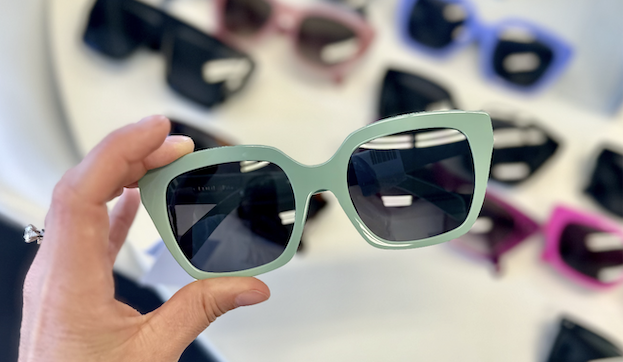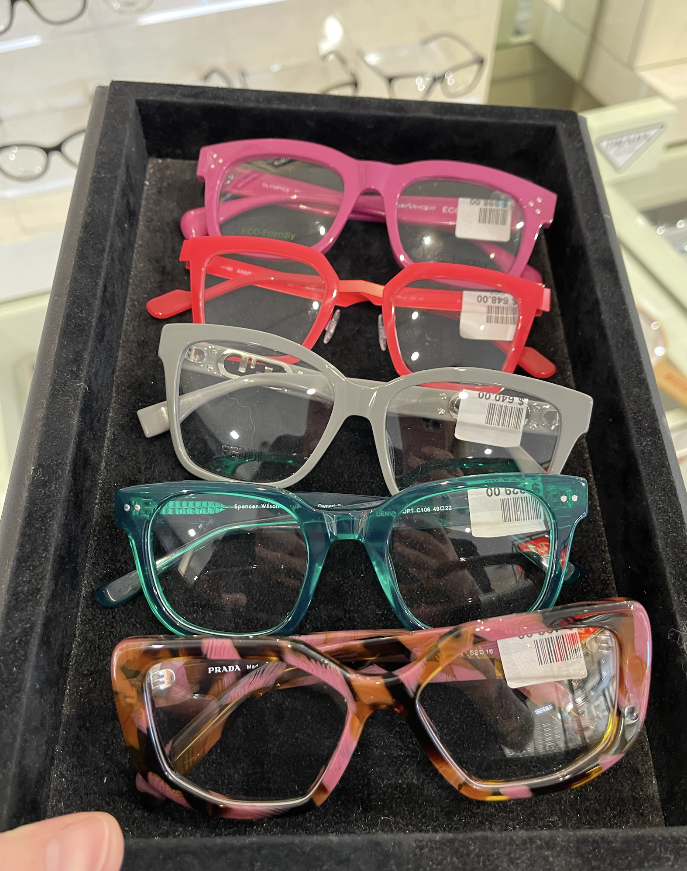Are you struggling with blurry vision or spending too much time squinting at distant objects?
You might be dealing with myopia!
Currently, 30% of the world’s eyes are blurry from myopia, and by 2050, the Brian Holden Vision Institute predicts it could jump to 50%
What is Myopia?
Myopia, also called nearsightedness, is a condition where you can see things up close, like reading a book or scrolling through your phone, very clearly. But when you look at something far away, like a whiteboard at school, TV at a distance or someone across the room, it looks blurry and fuzzy.
What Causes Myopia?
Myopia occurs when your eyes don’t focus light correctly. If your eyeball is too long or the front part of your eye (the cornea) is too curved, it causes the light rays to focus in front of the retina instead of directly on it. This results in things looking a bit blurry and hazy from afar.
The following factors may play a role in the development and progression of myopia:
-
Genetics:
Myopia usually runs in families. These sneaky genes are passed from your parents, just like your hair or eye color. There’s a good chance you could get myopia if your mom or dad has it
If one of your parents has myopia, your odds of developing it increase by 1.42 times. If both of your parents have it, your chances jump even higher, doubling to 2.70.
-
Environmental Factors:
Your eye muscles need a healthy mix of work and rest. Reading or using screens for extended periods of time without taking breaks puts additional pressure on them and raises their risk of getting myopia.
Participating in outdoor activities provides your eyes with the much-needed break to allow them to relax and breathe. It’s a well known fact that kids who spend more time in the sun and with distant objects have a lower chance of developing myopia.
-
Screen Time:
Consider screens as myopia’s best friend.
Too much screen time, especially for kids, can speed up nearsightedness. In fact, studies show that children who spend more than 3 hours a day on screens are 30% more likely to develop myopia
Extended periods of gaming, constant scrolling, and binge-watching can strain your eyes. Over time, blurry vision may result from the eyes becoming longer than they should, due to continual focus on close things.
The Risk Factors Of Myopia
With myopia, you might experience headaches, fatigue, and eye strain. But, higher levels of myopia don’t just make things a bit blurry, they can actually lead to more serious eye problems down the road.
When the eyeball keeps stretching, as in myopia, the risk of developing conditions like:
- Cataracts (clouding of the lens),
- Retinal detachment (when the retina pulls away from the back of the eye),
- Myopic maculopathy (damage to the retina’s central part),
All go up, which can lead to vision impairment or even blindness.
The Importance of Regular Reviews
It’s important to get your eyes checked regularly for myopia because it can change over time.
To ensure that myopia progression is being minimized and you are receiving the most up to date treatment, your eyes should be tested:
- Under 18: Every 6 to 12 months
- Age 18-40: Every 2 years
- Age 40+: Every 1-2 Years
- Age 60+: Every 12 months
Managing Myopia With Eyes&Vision Care
Here are some treatment options we may recommend to help manage your myopia progression. :
Healthy Eye Habits:
- Increasing your outdoor time, like spending at least 2 hours outdoors each day.
- Trying to keep near work after school to 2 hours or less.
- Limit the amount of time you spend on screens and remember to take regular breaks.
- Follow the 20-20-20 rule: every 20 minutes, look at something 20 feet away for at least 20 seconds.
- Maintaining a healthy diet that supports your eye health.
Optical treatments:
- Use myopia-control glasses or contact lenses.
- If these aren’t enough, atropine eye drops might help.
- Consider multifocal or orthokeratology (Ortho-K) lenses to slow myopia.
- In more severe cases, refractive surgery like LASIK can be considered to reshape the cornea and reduce dependency on corrective eyewear.
Binocular Vision Issues:
- Binocular vision anomalies such as esophoria and accommodative lag may also be detected and managed to provide an additional benefit for myopia control.
Comparison of treatment options
At Eyes&Vision, we have access to a full range of treatment options, allowing us to prescribe the absolute best for our patients, all based on the latest research and evidence.
| Type of Vision Correction | Effect on slowing myopia progression |
| Normal glasses and contact lenses | 0% (progression of 0.5 – 1D/year) |
| Progressive/bifocal glasses | 20-55% |
| MiYOSMART (special spectacle lens design) | 60% |
| Multifocal soft contact lenses | 30-50% |
| Orthokeratology (special design rigid contact lens) | 30-60% |
| Atropine 0.01% – 1% (daily drops to limit focusing ability) | 30-80%
now only used as second line treatment |
With regular visits to your Eyes&Vision optometrist, you’ll be on the path to managing myopia, enjoying clearer vision, and potentially needing fewer glasses in no time.
If you have any further questions about myopia, our team of skilled optometrists is here to help. Remember, you only get one set of eyes—schedule a consultation today to give them the care they deserve.




















